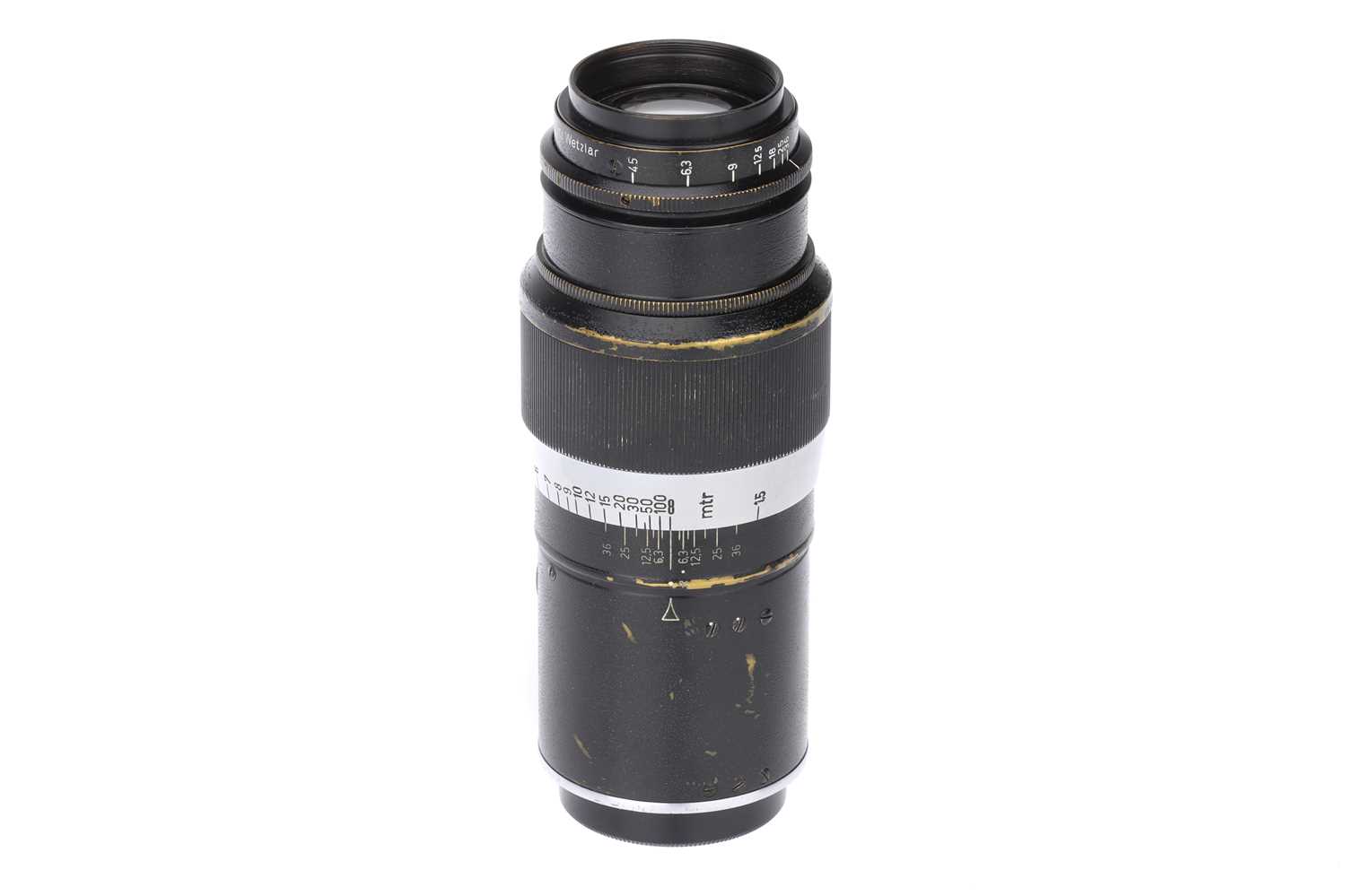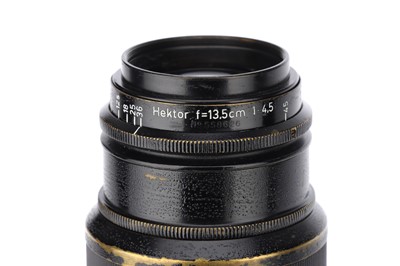17th Nov, 2022 12:00
Fine Photographica
A Leitz Hektor f/4.5 135mm Lens
black, serial no. 558626, body, G, elements, VG, complete with maker's caps
Provenance: Lots 125 - 149 are part of the John Robert Young collection - See lot 125 for a foreword.
Note: The lens was serviced by Peter Grisaffi at CRR Luton in 2011 and he also noted the following:
"The Hektor has been cleaned and iris markings 'brightened' as best as possible. The paintwork on this lens appears to be original and has a 'strippled' appearance due to handling. The acidic nature of sweat does affect the paintwork in this way. In this instance, the effect is so even that it looks like it was meant to be a special coating but I am sure that this is just evidence of regular use in the years shortly after it was manufactured. There is some difference in the mechanical structure of the lens though, in that, the front end comes apart in two sections, which is not the same as later lenses. Also, the optics are fitted differently than I would normally expect.
As the lens was made around 1940, I am sure that it was for military use. It may have been handled by a nervous German whose hands caused the paint to blister! There are also signs that the rear element surface had been coated at some time as remnants of the anti-reflective coating remain. This may have been done at a much later date and is impossible to determine when it was removed or applied."
black, serial no. 558626, body, G, elements, VG, complete with maker's caps
Provenance: Lots 125 - 149 are part of the John Robert Young collection - See lot 125 for a foreword.
Note: The lens was serviced by Peter Grisaffi at CRR Luton in 2011 and he also noted the following:
"The Hektor has been cleaned and iris markings 'brightened' as best as possible. The paintwork on this lens appears to be original and has a 'strippled' appearance due to handling. The acidic nature of sweat does affect the paintwork in this way. In this instance, the effect is so even that it looks like it was meant to be a special coating but I am sure that this is just evidence of regular use in the years shortly after it was manufactured. There is some difference in the mechanical structure of the lens though, in that, the front end comes apart in two sections, which is not the same as later lenses. Also, the optics are fitted differently than I would normally expect.
As the lens was made around 1940, I am sure that it was for military use. It may have been handled by a nervous German whose hands caused the paint to blister! There are also signs that the rear element surface had been coated at some time as remnants of the anti-reflective coating remain. This may have been done at a much later date and is impossible to determine when it was removed or applied."
Auction: Fine Photographica, 17th Nov, 2022



